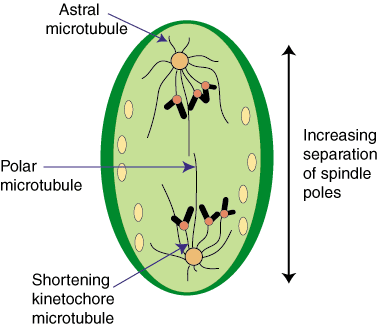Please wait while we process your payment
If you don't see it, please check your spam folder. Sometimes it can end up there.
If you don't see it, please check your spam folder. Sometimes it can end up there.
Please wait while we process your payment

By signing up you agree to our terms and privacy policy.
Don’t have an account? Subscribe now
Create Your Account
Sign up for your FREE 7-day trial
By signing up you agree to our terms and privacy policy.
Already have an account? Log in
Your Email
Choose Your Plan
Individual
Group Discount
Save over 50% with a SparkNotes PLUS Annual Plan!
 payment page
payment page
Purchasing SparkNotes PLUS for a group?
Get Annual Plans at a discount when you buy 2 or more!
Price
$24.99 $18.74 /subscription + tax
Subtotal $37.48 + tax
Save 25% on 2-49 accounts
Save 30% on 50-99 accounts
Want 100 or more? Contact us for a customized plan.
 payment page
payment page
Your Plan
Payment Details
Payment Summary
SparkNotes Plus
You'll be billed after your free trial ends.
7-Day Free Trial
Not Applicable
Renews May 17, 2025 May 10, 2025
Discounts (applied to next billing)
DUE NOW
US $0.00
SNPLUSROCKS20 | 20% Discount
This is not a valid promo code.
Discount Code (one code per order)
SparkNotes PLUS Annual Plan - Group Discount
Qty: 00
SparkNotes Plus subscription is $4.99/month or $24.99/year as selected above. The free trial period is the first 7 days of your subscription. TO CANCEL YOUR SUBSCRIPTION AND AVOID BEING CHARGED, YOU MUST CANCEL BEFORE THE END OF THE FREE TRIAL PERIOD. You may cancel your subscription on your Subscription and Billing page or contact Customer Support at custserv@bn.com. Your subscription will continue automatically once the free trial period is over. Free trial is available to new customers only.
Choose Your Plan
This site is protected by reCAPTCHA and the Google Privacy Policy and Terms of Service apply.
For the next 7 days, you'll have access to awesome PLUS stuff like AP English test prep, No Fear Shakespeare translations and audio, a note-taking tool, personalized dashboard, & much more!
You’ve successfully purchased a group discount. Your group members can use the joining link below to redeem their group membership. You'll also receive an email with the link.
Members will be prompted to log in or create an account to redeem their group membership.
Thanks for creating a SparkNotes account! Continue to start your free trial.
We're sorry, we could not create your account. SparkNotes PLUS is not available in your country. See what countries we’re in.
There was an error creating your account. Please check your payment details and try again.
Please wait while we process your payment

Your PLUS subscription has expired
Please wait while we process your payment
Please wait while we process your payment

Metaphase and Anaphase
The next two major events that take place in mitosis are the alignment of chromosomes at the center of the cell and the subsequent separation of sister chromatids to opposite mitotic spindle poles. These two events occur in metaphase and anaphase, respectively. In this section we will review the events of both of these phases.

At the end of prometaphase, the centrosomes have aligned at opposite ends, or poles of the cell and chromosomes are being moved toward the center of the cell. Metaphase is marked by the alignment of chromosomes at the center of the cell, half way between each of the mitoic spindle poles. Movement is mediated by the kinetochore microtubles, which push and pull on the chromosomes to align them into what is called the metaphase plate. Chromosomes on the metaphase plate are held there tightly by pushing and pulling forces from the microtubules.
Microtubule structure allows them to be dynamic molecules. The subunit of microtubules is called tubulin and it is constantly added and removed from the ends of microtubules leading to a state of treadmilling. The chromosomes are held tightly by these forces constantly pushing and pulling on them.
Metaphase can occupy a large portion of the total time of mitosis because chromosome alignment at the center of the cell on the metaphase plate acts as a checkpoint for progression into the next phase, anaphase. Cells can arrest in metaphase for days until the chromosomes are properly aligned and the cell enters anaphase.

Entrance into anaphase is triggered by the inactivation of M phase-promoting factor that follows mitotic cyclin degradation {see Mitotic cyclin. During anaphase, the kinetochore microtubules retract, increasing the seperation of the sister chromatids as they are moved further toward the opposite spindle poles. /PARAGRAPH PARAGRAPH Anaphase can be broken into two distinct phases. In the first phase, called anaphase A, chromosomes move poleward, away from the metaphase plate with the retraction of the microtubules. This movement occurs at approximately 2 micrometers per minute (the entire length of a cell is between 10 and 30 micrometers). In the second phase, anaphase B, the mitotic poles marked by the centrosomes themselves separate by the elongation of a specific type of non-kinetochore microtubule, called a polar microtubule. The extent of the separation of the poles varies from species to species. The entire duration of anaphase is relatively short, usually only lasting a few minutes. /PARAGRAPH
Please wait while we process your payment

